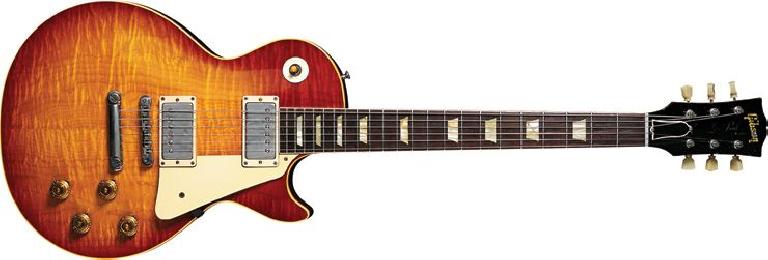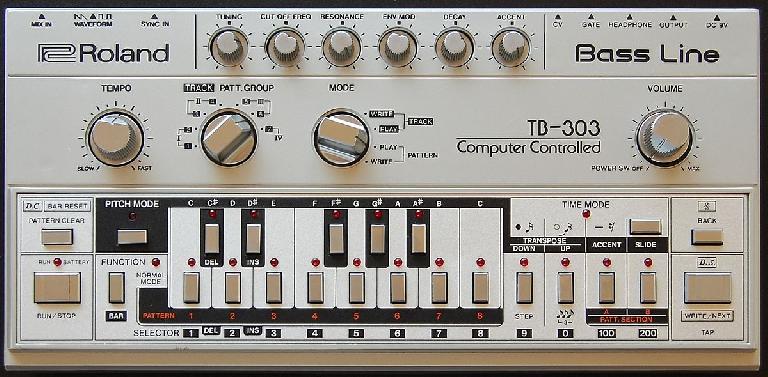GAS is embarrassing. We rarely admit we have it. It comes on at any time – often unexpectedly – and when it does, a lot of hot air gets expelled. Those closest to us turn up their noses in disgust and despair, and they move off the sofa for some breathing space.
You smile sheepishly. You can’t help it. You try to sit still, keep it in, but as soon as you move it slips out, to everyone’s disgust. You even have GAS while you sleep, you dream about it and wake up to it. Your friends don’t even want to hang out with you anymore. Even the waiter at your local cafe avoids you now.
Yup, you’ve got a serious case of Gear Acquisition Syndrome.
Somehow, the notion that you need a certain piece of hardware or software to move to the “next” level has burrowed into your brain like a bot fly. The feeling that you are “here” and need a very particular thing to be “there” wiggles in your brain, slowly driving you insane. No one is immune.
So what to do? How do you determine that an upgrade is actually justified and not just your fevered ego pining for a shiny new toy?
Is it Serious?
It can be very misleading to merely “have a feeling” that something about your current setup is inadequate. Unless you can be very specific about the issue you are trying to “resolve” it is most probably GAS you’re dealing with.
It is very easy to assume that a better piece of gear will improve your music, but that is very rarely the case. You could put a 100 dollar guitar in Jimi Hendrix’s hands and a 2000 dollar guitar in the hands of a mediocre player and Jimi will shred the other guy to pieces. It’s not the gear that creates the magic you are looking for – it only facilitates it – and only if you how to flesh it out.
Internet forums are rife with young producers asking for advice on “another-plug-in-like-the one-I-am-already-using-but-better”, but they are missing out on a great opportunity right under their noses. By sticking with first party plug-ins in your DAW you are doing yourself an enormous favour. The plug-ins that come native with most DAWS are more than adequate for professional output if you know how they work, and their limitations. By learning them inside out first you will be in a much better position to hear what a $300 third-party plug-in of the same type will give you for your money.
It’s also a good idea to separate false weakness from true weakness.
A top level guitarist can shred on a 100 dollar guitar with relative ease, but there are other factors beyond music that make it necessary for an experienced guitarist to invest in a more expensive instrument.
There are true weaknesses with an entry level guitar; it doesn’t stay in tune, and build quality might not survive heavy touring. There are also issues over time such as realising that the neck is too thick for your particular style of playing, the action and intonation isn’t accurately adjustable, and the guitar really is too heavy for stage work.
Some false weaknesses might be that a cheap guitar makes learning more difficult, and that it because it is not a “brand name” the tone you are looking for is not possible, and so on.
The same applies to DJ gear and recording equipment.
The thing to consider is that very few great artists started out jamming on thousand dollar gear, and arguably the more expensive their gear gets the less interesting their music becomes anyway…
It’s Serious…
Sometimes the need for new or improved gear is a genuine issue with deep ramifications for your music and creativity if left untreated.
If you have a specific issue within your current setup like unacceptable colouration, high self-noise, or severe technical limitations like outdated or unsupported hardware/software – causing glitches that make work impossible – then an upgrade is well justified. But knowing why you need to upgrade remains very important. This is because you can now check out alternatives with a specific set of desired improvements in mind, rather than a vague notion that “things could be better” if you had “better” gear.
Another good time to upgrade, even when there is nothing “wrong” with your gear per se, is when your current setup is not in line with your practical needs.
For example, you started out on a two channel interface and a “lite” DAW with limited track counts but you’re good enough that local bands are asking you to record their demos after hearing your work. So, now you might need a few more channels because your needs have shifted up a gear. This is a true weakness in your set-up: not enough channels.
Should you be considering buying more channels? Yes. Should you be buying a five-thousand dollar interface after your hundred dollar two channel? Nope, not by a long shot. If budget is tight, stick with the same manufacturer and go up to their next channel count. If budget allows, the general rule of thumb is to buy the “best” you can afford. But, “better” converters and “better” drivers are false weaknesses at this point. Keep it simple, keep it real. Remember, your trouble is not “converter quality”, it’s channel count – see how insidious GAS can be?
The only thing is to make make sure the upgrade keeps or improves on all the other aspects that are not an issue. For example, it’s pointless to get a new interface with more channels that are noisier or lower quality than the two you already have. It’s called upgrading not sideways-grading.
Another important thing to grasp is that improvements follow a law of diminishing returns; each new 'improvement' costs disproportionately more than the last. To get usefully better performance than a $100 interface it's going to cost you $700 - $1k, and to better a $1k interface you'll be looking at $3k, and then selling a bodily organ... and so on.
A final note on upgrades is that it really only makes sense if you are somehow getting a return on your investments (ROI). If you are just starting out, you may very well be throwing good money down the drain by upgrading to be competitive, but as you progress, as you book more shows, or start getting paid for audio work, then upgrading gear becomes more realistic and even necessary.
In this sense you could consider upgrading only after “successes” not before. In other words, consider aligning your upgrades with your audio accomplishments, not the other way round.
TB-303 Antacid
A significant amount of interesting music was created by the limitations of a given set of technologies, and often great ideas came from embracing those limitations, not from mitigating them. The Roland TB-303 is a great example. Originally meant to be a bassline generator for a one-man-band, it was dismally bad at creating realistic acoustic sounding basslines. What it did do, when tweaked way past its intended settings, was produce an alien, completely inacoustic growling, screeching acidic bass sound that spawned entire musical genres.
If you are struggling with “limitations” financial or otherwise, don’t let them be a distraction, embrace them, and don’t confuse this legitimate right of passage and invaluable learning process with GAS. The harsh reality to face is that if you cannot make interesting music with the tools you currently have at hand, your music will not magically get more interesting with new gear.
Use limitations to your advantage. It forces you to be creative, to find workarounds, to hack and tweak and generally focus on improving and aspiring, and then when you know what you are lacking or looking for with absolute certainty, an upgrade becomes an organic and natural part of your growth as a producer and artist, and not an irritating pain in the gut.






 © 2024 Ask.Audio
A NonLinear Educating Company
© 2024 Ask.Audio
A NonLinear Educating Company
Discussion
As for native DAW plugs. You are absolutely right. The added benefit is less stress on your CPU. I also
Learned a lot more on synthesis using Live's devices than yhe hardware I used to own.
Finally, I think that a well laid out piece of gear makes a hell of a lot of difference too. For example, i bought a Virus TI1 (great machine) but the menu diving made it difficult to get to grips with spund design. I then bought DSI Tempest and the simply logical layout and voice limitation have focused me in a way that mixes sound better and my understanding of patch design in the virus is more clear.
It's great that there are so many options these days. Fnal advice: dont buy on future firmware upgrade promises...it is a terrible trend.
Cheers!
Want to join the discussion?
Create an account or login to get started!